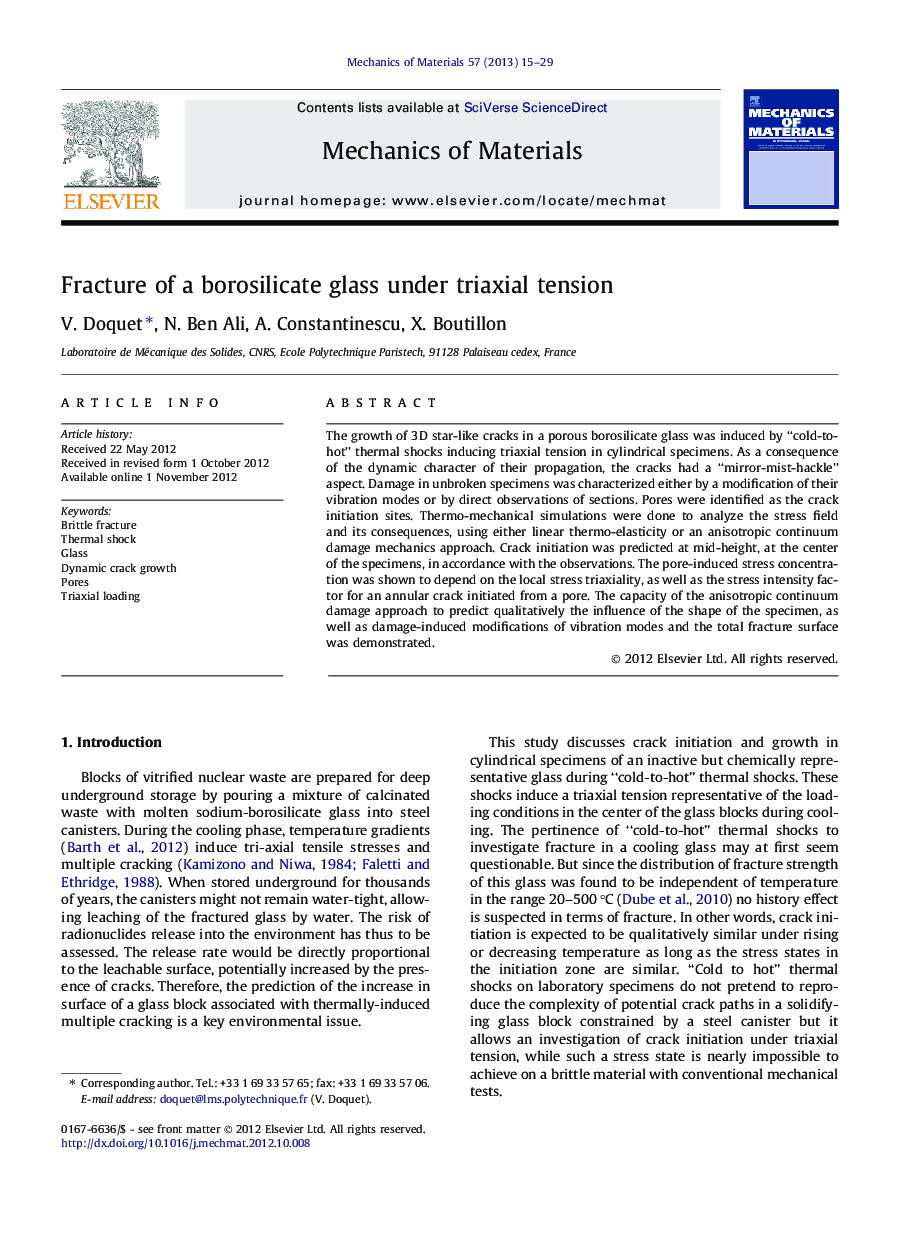| Article ID | Journal | Published Year | Pages | File Type |
|---|---|---|---|---|
| 797598 | Mechanics of Materials | 2013 | 15 Pages |
The growth of 3D star-like cracks in a porous borosilicate glass was induced by “cold-to-hot” thermal shocks inducing triaxial tension in cylindrical specimens. As a consequence of the dynamic character of their propagation, the cracks had a “mirror-mist-hackle” aspect. Damage in unbroken specimens was characterized either by a modification of their vibration modes or by direct observations of sections. Pores were identified as the crack initiation sites. Thermo-mechanical simulations were done to analyze the stress field and its consequences, using either linear thermo-elasticity or an anisotropic continuum damage mechanics approach. Crack initiation was predicted at mid-height, at the center of the specimens, in accordance with the observations. The pore-induced stress concentration was shown to depend on the local stress triaxiality, as well as the stress intensity factor for an annular crack initiated from a pore. The capacity of the anisotropic continuum damage approach to predict qualitatively the influence of the shape of the specimen, as well as damage-induced modifications of vibration modes and the total fracture surface was demonstrated.
► Glass specimens were broken in triaxial tension induced by cold-to-hot thermal shock. ► Cracks initiated from pores propagated dynamically with a “mirror-mist-hackle” aspect. ► Damage in unbroken specimens was detected by a change of their vibration modes. ► An anisotropic continuum damage mechanics model was used for numerical simulations. ► The model predicts well the increase in fracture surface with the thermal amplitude.
